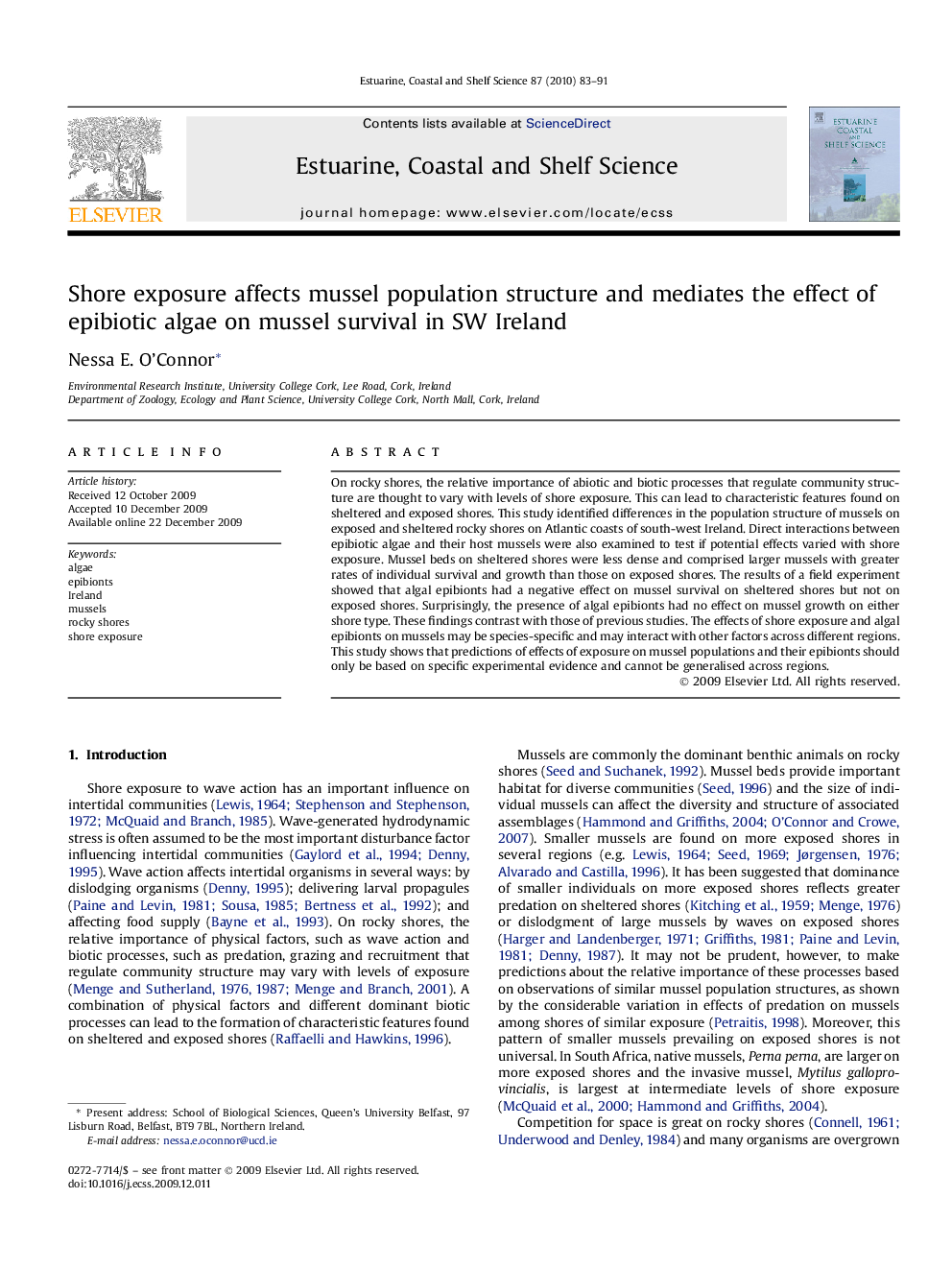| Article ID | Journal | Published Year | Pages | File Type |
|---|---|---|---|---|
| 4541091 | Estuarine, Coastal and Shelf Science | 2010 | 9 Pages |
On rocky shores, the relative importance of abiotic and biotic processes that regulate community structure are thought to vary with levels of shore exposure. This can lead to characteristic features found on sheltered and exposed shores. This study identified differences in the population structure of mussels on exposed and sheltered rocky shores on Atlantic coasts of south-west Ireland. Direct interactions between epibiotic algae and their host mussels were also examined to test if potential effects varied with shore exposure. Mussel beds on sheltered shores were less dense and comprised larger mussels with greater rates of individual survival and growth than those on exposed shores. The results of a field experiment showed that algal epibionts had a negative effect on mussel survival on sheltered shores but not on exposed shores. Surprisingly, the presence of algal epibionts had no effect on mussel growth on either shore type. These findings contrast with those of previous studies. The effects of shore exposure and algal epibionts on mussels may be species-specific and may interact with other factors across different regions. This study shows that predictions of effects of exposure on mussel populations and their epibionts should only be based on specific experimental evidence and cannot be generalised across regions.
